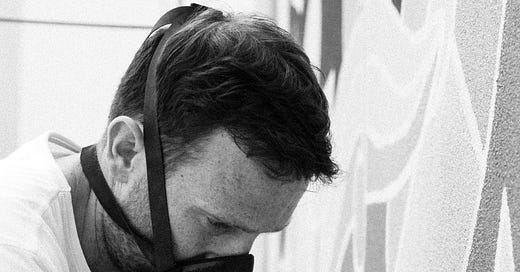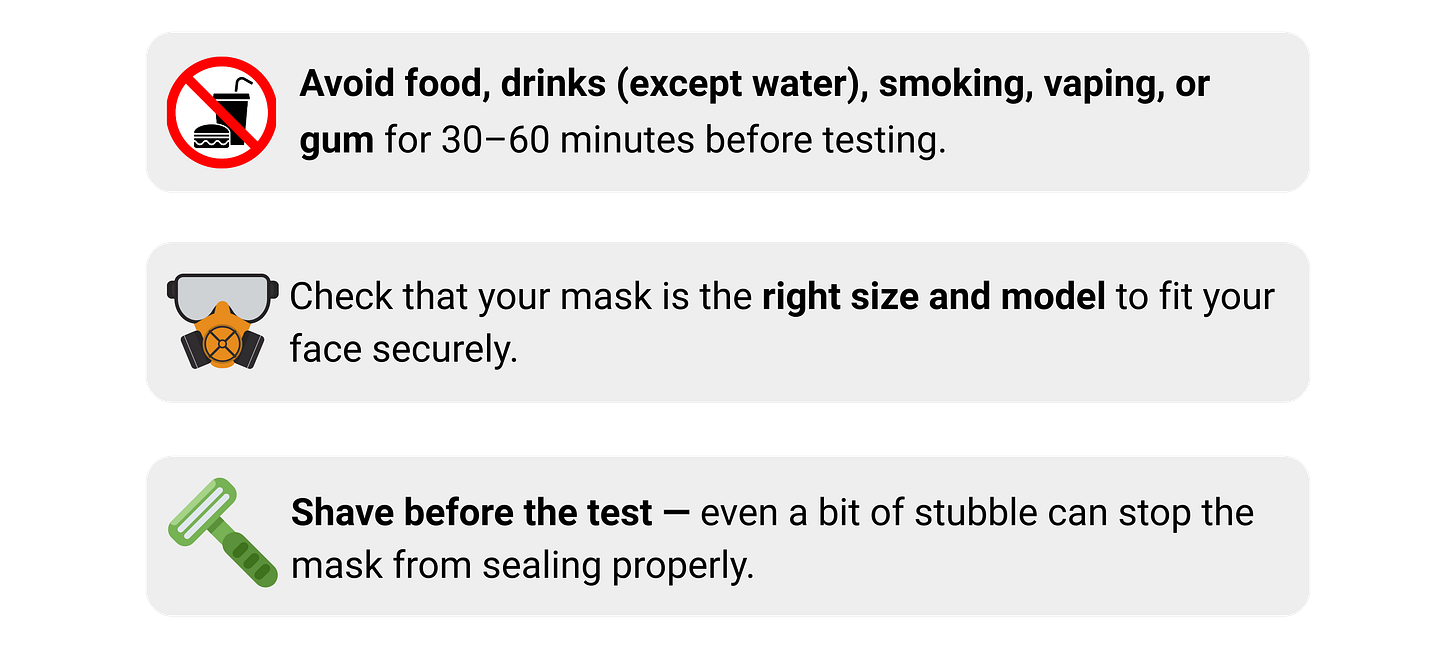I Wear a Dust Mask — Do I Need a Face Fit Test?
What Construction Workers Need to Know About Respiratory Protection
If your mask doesn’t seal properly to your face, it won’t protect you. Face fit testing ensures the mask forms a secure seal, protecting you from inhaling harmful dust, fumes, and other airborne hazards.
Is Face Fit Testing a Legal Requirement?
Yes. Face fit testing is not just a good practice; it's a legal requirement under the Control of Substances Hazardous to Health Regulations (COSHH 2002). The regulations mandate that all tight-fitting RPE is face-fit tested by a competent person. This applies to single-use masks (like dust masks), reusable half-masks, and full-face respirators.
Which Masks Require Fit Testing?
Face fit testing is required for any RPE that relies on a tight seal to the face to protect the wearer, including:
Disposable dust masks
Reusable half-masks
Full-face masks
Tight-fitting powered respirators
Self-contained breathing apparatus (SCBA)
Why Don’t Loose-Fitting Respirators Require Testing?
Loose-fitting RPE, like hooded respirators and powered air-purifying respirators (PAPRs), don’t rely on a tight face seal, so face fit testing isn’t needed. This makes them suitable for workers who have facial hair or can’t pass a face fit test for medical or personal reasons.
Hooded respirators sit loosely over the head and act as a physical barrier against airborne hazards.
PAPRs use a powered fan to blow filtered air into the hood, creating positive pressure that prevents contaminants from entering.
Types of Face Fit Testing – What’s the Difference?
There are two approved methods:
Qualitative Fit Testing
This is a basic pass/fail test. A solution with a distinct taste (bitter or sweet) is introduced into a hood worn over the head. If the wearer can taste the agent, the mask is not sealing properly.
➤ Used for disposable and reusable half masks.Quantitative Fit Testing
This uses specialised equipment to measure the number of particles that leak into the mask compared to the air outside. It provides a numerical result and clearly indicates whether the seal is adequate.
➤ Suitable for half and full-face masks.
How to Prepare for a Face Fit Test
Not Everyone Can Wear Tight-Fitting Masks
Some workers may not be able to wear a tight-fitting mask due to:
Respiratory or cardiovascular conditions (e.g. COPD, asthma, hypertension)
Skin conditions, facial injuries or deformities
Claustrophobia, anxiety or PTSD
Religious or personal reasons for keeping facial hair
In these cases, a hooded respirator or a PAPR should be considered. These alternatives do not rely on a tight seal and are often better suited for workers with medical or personal limitations.
Workers should undergo a physical and mental health screening to assess their suitability for tight-fitting RPE.
Do Employers Need to Keep Face Fit Test Records?
Yes — a detailed record must be kept for each employee. This should include:
Name of the person tested
Type of test (qualitative/quantitative)
Date of test and due date for retest
Make/model of the mask
Test result
Name of the competent tester
Who Can Carry Out Face Fit Tests?
Face fit testing must be conducted by someone trained and competent, as defined by the HSE. The tester should have attended a training course delivered by an accredited instructor that covers all areas of competence detailed in the Health and Safety Executive (HSE) publication INDG479, Guidance on Respiratory Protective Equipment (RPE) Fit Testing.
When Should Face Fit Testing Be Repeated?
Cited Resources & Further Guidance
Guidance on respiratory protective equipment (RPE) fit testing
Respiratory protective equipment at work - A practical guide






